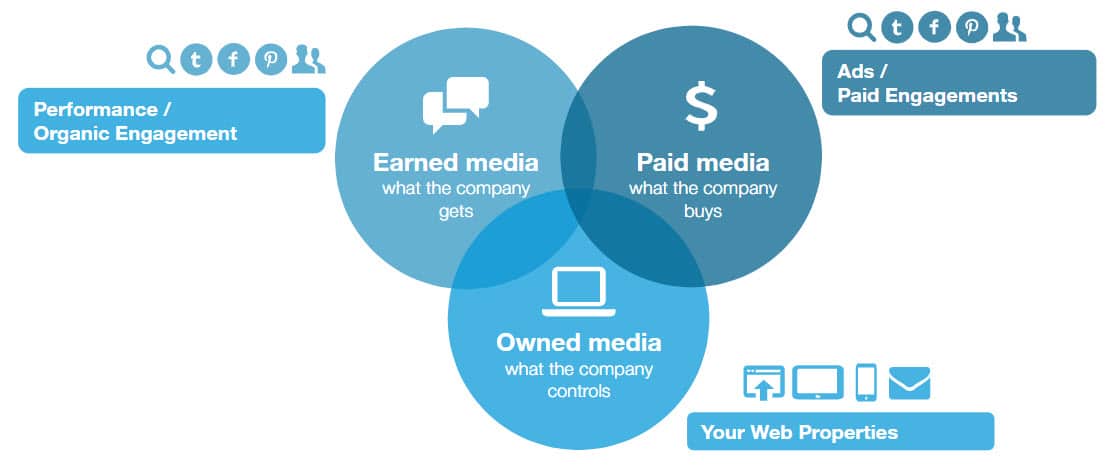Interview with Sébastien Neveu : 5 inbound trends to watch in 2019
In this interview with Sébastien Neveu, practice leader in SEO and inbound marketing, you will discover major trends that will greatly influence companies today and in the future.
When you’re hungry for knowledge, one of the big advantages of working for an agency is that you’re surrounded by experts, each more inspiring than the next. Every month, I’ll be chatting with one of them, sharing their latest observations and discoveries and getting a unique perspective on the future of digital.
This month, I spoke with Sébastien Neveu, practice lead for SEO and inbound marketing. Quick background, Sébastien joined our marketing and content team in August 2018, after several years on the publisher side, the agency side and the advertiser side. During our meeting, he shared five trends to watch for in his field in 2019. But let’s start at the beginning.
Sébastien, tell me how you explain what you do for a living to your friends?
First off, I start by explaining that my job doesn’t involve installing printers or updating cell phones (laughs). Simply put, I do marketing and my goal is to give websites more visibility on the web, without paid media. I mostly play a strategist role.
On your LinkedIn profile, it says you started your career in business intelligence. How did you end up doing SEO? And how are those two fields connected?
SN: My education had a heavy focus on the web, it was tied to information technology. In business intelligence, my goal was to analyze markets in relation to information technology. Today, what I do is more technical, but I take essentially the same systemic approach. By which I mean that, in both situations, you have to try to understand the system within which the customer is evolving, their environment. Understanding all the ins and outs is equivalent to Porter’s Five Forces; analyzing the customer, determining the bargaining power of suppliers, the threat of new entrants, barriers to entry, etc. The inbound philosophy is more or less the same. It’s working on behalf of a client to understand where they are, where they come from, what their goals are, who the competition is, what their strengths are, and their relative positioning. Are we leaders? Challengers? Is the market competitive? Is the market changing? The main difference is that inbound works with a longer term vision. There’s no question that you need to be able to analyze what’s happening in the present, but you also need to be able to anticipate what’s coming based on trends.
Speaking of trends, let’s jump right into the subject! Tell me Sébastien, what trends should we focus on in 2019?
1. GAFAM on steroids
First, the battle between the mastodons of the sector. 2018 was marked by a number of scandals linked to digital and data.
In their reviews of 2018, several media outlets remarked on the fact that user confidence in Facebook has dropped significantly.
Everyone remembers Cambridge Analytica, concerns about data use, outcries over fake news and other rigged data. The ramifications of all that will undoubtedly be felt in 2019, particularly in terms of the battle being waged by the giants of the web, the infamous GAFA.
You’re referring to Google, Apple, Facebook and Amazon?
Exactly. So, one thing is almost certain: Facebook will try to save face (laughs). Amazon will make further inroads with shopping, and will definitely make a splash with Twitch, a broadcasting platform for real-time multiplayer online games and e-sports.
From an inbound marketing and SEO perspective, we’ll have Google which, for example, will invest a lot more in Google Image, with the intention of thwarting Instagram (and thereby Facebook). Google will equally bet on local, to gain ground on another one of Facebook’s strong points. Finally, Google will try to jump back into social, now that the demise of Google+ has officially been announced. It will almost certainly do this through YouTube, to try to limit the positioning of Twitch, which is making inroads into several parts of the market, despite the fact that it’s still quite niche and exclusive to video games.
How can you explain the threat Twitch poses to YouTube?
In short, Twitch created a business model that features a membership system that’s far more fluid for users. Unlike YouTube, whose recent changes have limited monetization opportunities for content creators. This situation has driven content creators to start migrating to Twitch, mainly for its remuneration method, which allows viewers to make donations through a system of credits, thereby creating a sort of local currency. Twitch has practically re-created the premium ad model, through volunteering. And the most interesting part, is that it works really well.
2. A step towards editorial profitability
Another trend to pay attention to is a major change coming to publishers, specifically major media outlets. We could see a number of ad partnerships forming in order to get a critical mass of visitors. My media colleagues might be shocked to hear me say it (laughs), but I think we’re going to see a drop in programmatic inventory among publishers who succeed in gaining this critical mass. The partnerships will allow them to create an even stronger brand, and therefore allow for even greater control of ad revenue, which is the crux of the matter. With the current model, the average cost per thousand is too low to ensure sufficient revenue to cover journalists salaries, for example. We’ll see if a premium model could have an impact on freedom of expression!
We often see trends come back. The premium model has been getting closer to magazines than newspapers, would you say?
Digital is a bit like fashion. Trends and best practices change every year, but they inevitably make a come back years later! The terms change, but the concepts remain the same. It’s a swing of the pendulum: from a more marketing, conceptual approach to a more technical one, from an ad-based approach to one based on affiliation. We rarely reinvent the wheel, we just bring it up to date.
What value do agencies bring, in this context?
An agency’s job is to identify the trends that best meet their clients’ needs. They play the role of scouts, finding the shortest, most efficient path to the desired destination.
3. Transparency at all costs
What direction should companies move towards, in your opinion?
Brands have no choice but to reinforce their credibility. The reading grid for this credibility, determined by Google, will rely on expertise, authority and transparency. This grid will allow us to gauge the quality of a piece of content and, by extension, a brand. In inbound, brands need to demonstrate that they can respond to consumers’ needs and expectations, that they are useful and have a positive impact on both an individual and a societal level. Take, for example, Mountain Equipment Coop (MEC). This retailer and manufacturer of outdoor clothing and equipment has to be able to provide expertise on any and everything concerning outdoor sports. That needs to come through not only in terms of the content they offer, but also in the format of their site.
4. The disappearance of data
What is this, from a technical point of view?
As I explained earlier, we’re seeing a distrust of how certain platforms are using data. As the classification of content becomes more and more extensive, there will be an opportunity to recreate missing data. Brands will have to be re-engaged to create content, in addition to adopting more and more advanced content strategies. As social actions go down, there’s a need to demonstrate expertise. It’s therefore possible to predict that Owned, the platforms that companies own and over which they have the most control, will become far more important.
Are we seeing the same reality in retail?
For retailers, there will be a need to concretely show all the different points of sales on the company’s platforms. But overall, companies will need to learn to control their digital assets with the fewest possible third-party platforms. It’s the only way they can fully reclaim their freedom.
5. Digital accountability
What marketing ethics are we moving towards?
We often think, wrongly, that the goal of marketing is to sell, at any cost, a product that consumers don’t need. This strategy, called push, refers to archaic ad models. Today, we connect with consumers based on real needs. And that’s mainly what we see in SEO. We don’t impose trends or needs, we look for what’s in demand, and we try to meet that demand as well as possible by providing the right answers in the right place.
The way I like to work, is to identify the best path to resolve a problem or reach an objective, to understand the environment. I do marketing with the conviction that I sometimes have the power to change things; lead my clients to greater digital accountability, commitment to sustainable development.
Are consumers really there yet? What about the giants of the web?
Today’s consumers can be divided into two groups: those who could care less, and those who demand that brands prove their values. A lot is going to change in terms of production, beyond digital. I’m talking about slow food, voluntary simplicity, refusal of sales, the movement from fashion collections to timeless cuts. The surprising thing is that even Google is following this trend to do less, better. In other words, a company with a blog is better off updating its content and making note of the update than producing similar content every year. We need to think about content marketing a bit like we do gardening: organisms grow best in a changing but controlled environment.
You’ve given us lots of good food for thought here! Thank you, Sébastien, for taking the time to share these thoughts.
To learn more about how our team can help your business, visit this page.

.jpg)





